El Grande Norte 2: Elqui to the Atacama
I can see why the hippies liked the Elqui Valley. An oasis in the desert fed by the Elqui river, this lush valley is surrounded by arid mountain tops silhouetted by famously crystal clear skies. There is definitely an ‘onda’, or vibe to the place. It’s zen. According to the alternative lifestyle seekers who flocked here in the 1960s, it’s actually the centre of the Earth’s magnetism, which shifted from the South Pole to roughly this spot in Chile. While I did feel drawn down the valley, I think this was more because of the aesthetics of the place, rather than its magnetic field. With Gerald at the wheel of our white Nissan Tiida, and his four passengers in tow, we headed upstream to see what all the fuss was about.
The contrast between green vineyards and the rocks beyond is the first thing that hits you, and it is stunning. You can see how the place must have inspired the Chilean poet Gabriella Mistral, who was born here in 1889 in the town of Vicuña, at the opening of the valley, but grew up further upstream in the small village of Montegrande. There is a small museum and statue in this tiny village dedicated to poet, educator and feminist who is still the only Latin American women to have won the Nobel Prize for literature. You get a chance to peer into the original bedroom of the young Gabriella (born Lucila Godoy Alcayaga), read original letters and samples of poetry. Sadly my Castellano is not of a high enough standard to appreciate the literature, so a return visit might be necessary. A few signs of the alternative folk who made a life here is still evident, like the dreadlocked couples selling Mapuche symbols carved from gourd skin. Generally they must be tucked away further up the valley. Most of the people we encountered were tourists, Chilean and Gringo, more interested in Mistral than magnetism.
Heading back out of the valley you reach Vicuña (not to be mistaken for one of these guys), a more lively town with a busy market and large Plaza de Armas (try and find a town in Chile without one). If you have time you can arrange a visit to an observatory for a few thousand pesos, with transport provided and see the stunning night sky through a scope. With little time we had to remain Earth bound, visiting instead a fascinating, albeit dusty entomology and natural history museum on the south side of the plaza. This had an impressive collection of semi-precious stones and seashells from around the world and some inspiring displays:
As you travel north away from the Elqui Valley you start to enter the Atacama proper. This is where the north of Chile starts getting weird. The Pan-American highway, the artery through which almost all of Chile’s goods, people, food and beer flow, runs like a line of hot treacle across this arid expanse. The scale alone impresses. Tiny specs in the distance take 15 minutes to reach you, becoming vast trucks loaded with anything from sulphuric acid for the copper mines, to beer, for…well, probably the copper mines… and everyone else who lives in this barren place. Beer does seem to be the lifeblood of this part of Chile. Almost every other truck is a Crystal truck.
Yes, the Crystal highway ensures that even on the driest place on earth, beer is within easy reach. Having spent two weeks in this place, you can understand the urge to drink. It’s barren. Sure, the landscapes are stunning. Beginning with undulating red and golden hills you slowly creep upwards and northwards onto vast flat plains with the white foothills of the Andes shimmering in the distance. But there is nothing here. A rock stands out as a point of interest. Something to go and look at! The road itself is the most interesting thing to marvel at. The way it crawls on, unforgiving, through plain, mountain and valley with nothing to support it but itself. How they ever built this thing out here is beyond comprehension.
A few hundred miles north of La Serena the road takes a rare turn and heads for the coast. Just as you become accustomed to the bareness of the desert, as the road winds down valleys towards the pacific you are hit with a dose of something unexpected. Bleakness. Yellow sun, white desert and golden hills I can handle. Grey skies, grey rock, grey sea, I cannot. The coast from here to Iquique is blanketed by an almost permanent layer of thick, low cloud, washing out the colour palate of the desert and creating a land of monotone. It was here, during a night in the small town of Taltal, that food poising took us by surprise and the journey north seemed its bleakest yet…
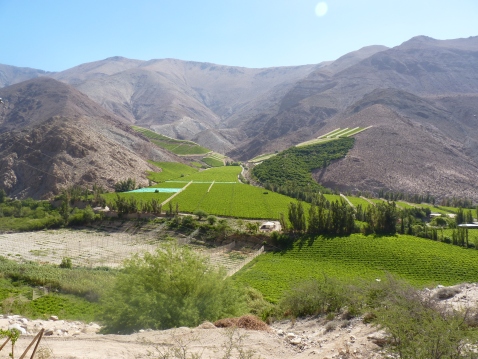
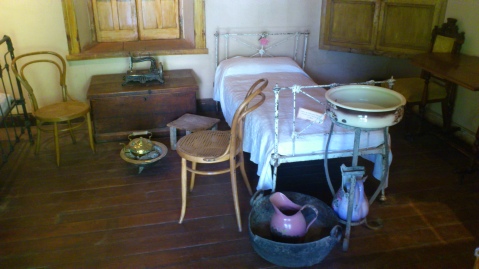
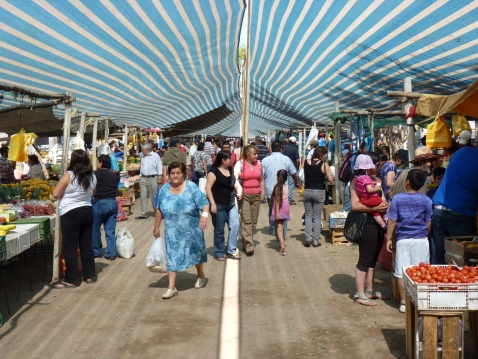
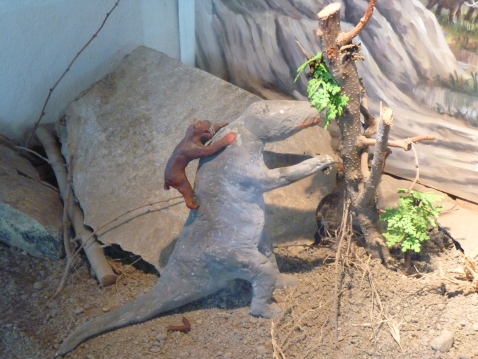
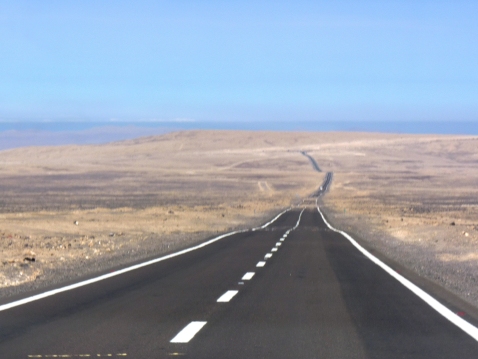
Very interesting, beautiful photos. I’d love to visit the green valley of Elqui.
Thanks Arianna! It’s a stunning place, you should definitely go 🙂